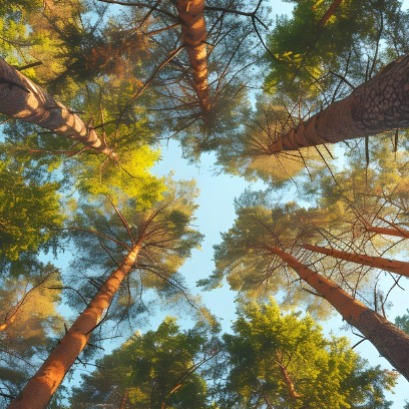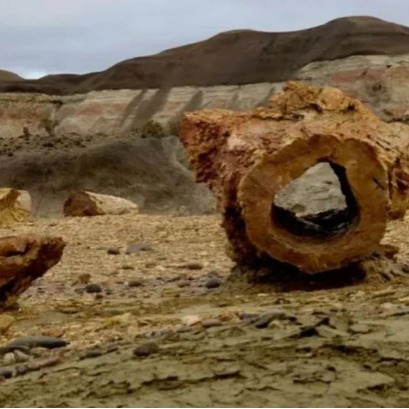
He is the most resistant wood producer in the world and grows in Argentina: he knows the tree that surprises with its properties
? In the north, one of the oldest and most resistant trees on the planet survives. ? Its name is Guayacán and has medicinal properties, in addition to an amazing wood.
? In the depth of Mount Chaqueño, where the earth is dry and the sun does not give a truce, a legendary tree grows silent and powerful: the guayacán. His robust appearance and slow growth made him one of the greatest botanical treasures in South America. And although many do not know, this tree has the most resistant wood in the world, valued both by its hardness and its beauty ? For centuries, the Guayacán was part of the landscape and the life of the communities of the North Argentina. Not only does it offer shadow and shelter to different species of the ecosystem, but it was also used for its healing and constructive properties, going from generation to generation as an invaluable natural resource. Today, this native tree arouses a renewed interest not only between scientists and carpenters, but also among those who seek to connect with ancestral knowledge and protect the natural resources of the country. known as Bulnesia Sarmientoi) is a species capable of resist the most extreme conditions of the soil and climate, which already makes it a rarity. But what really distinguishes it is its high density wood, so heavy that it sinks into the water, something unusual between the trees, according to an article from the Republic of Peru. At first glance, its wood presents tones that range from dark brown to green, with veins that give it a unique aesthetic. His growth is slow, which also contributes to its strength. Some specimens can live decades and even centuries, becoming living witnesses of local time and culture. Therefore, it is not surprising that it is a protected and valued tree in various regions of Latin America. Beyond the wood: medicinal uses of the guayacánade more of its use in luxury cabinetmaking and the manufacture of objects resistant to the passage of time, the Guayacán also stands out for its medicinal properties. In traditional medicine, its cooked cortex was used to treat rheumatisms, wounds and even diabetes. The flowers, on the other hand, are usually used in infusions to relieve cough, according to the aforementioned source. I even even gives rise to Guayacol, an extract that functions as an antiseptic, expectorant and stimulating, historically used in the treatment of respiratory diseases. Mexico, Colombia, Ecuador, Peru and Venezuela. In Argentina, it grows especially in the north and northwest provinces, especially in the semi -arid Chaco, where the native mountain still retains its natural wealth.
IT MAY INTEREST YOU
 The forest turned into the worlds largest stone is in Argentina
The forest turned into the worlds largest stone is in Argentina
In southern Argentina, an ancient forest converted into stone stands as a unique testimony of the natural history of the world and a silent emblem of the deep Patagonia.
 An inverted forest of millions of trees has held Venice for more than 1600 years
An inverted forest of millions of trees has held Venice for more than 1600 years
It is an millenary engineering work. For more than 1,600 years, Venice remains firm thanks to a unique foundation system in the world. These are millions of wooden posts stuck with the tip down in the muddy background of the lagoon. This base, which looks like an inverted forest, is composed of aler, oak, aliso, pine, fir and elmo. Thanks to this millenary engineering work, the city was officially founded on March 25, 421. Taking advantage of the laws of physics, monumental buildings have been built on land that seemed unstable. Only Rialtos bridge rests on 14,000 piles, while the Basilica of San Marcos sits over 10,000 oaks. No one knows how many wooden posts there are in total under the entire city, but the Venetian foundations have more than 16 centuries fulfilling their function, unlike modern materials such as concrete or steel, which have a projected life of 50 years on average as according to Alexander Puzrin, professor of geomechanics and geosystem engineering at the Federal Polytechnic University of Zúric.
 We have found the oldest fossil forest on Earth: Tipa de protárboles
We have found the oldest fossil forest on Earth: Tipa de protárboles
Researchers from Cardiff and Cambridge universities found the oldest fossil forest in Great Britain in Britain. Until before this discovery, that title belonged to the remains of another forest found in New York in 2019, which dates back to around 386 million years. This, discovered in 2024, is four million years older.





















